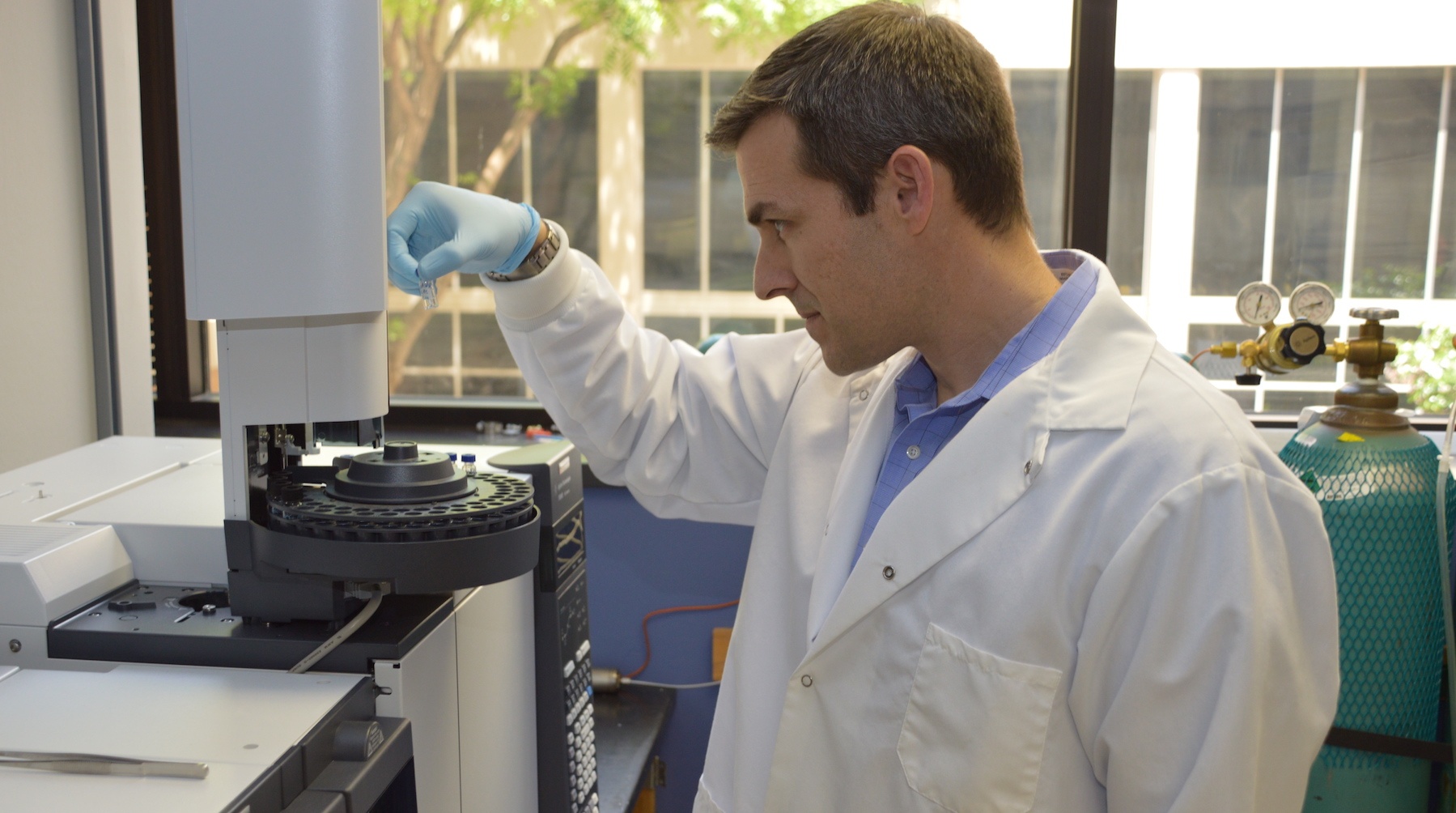Scientists at OMRF are pushing the bounds of a decades-old scientific method to study the origins of osteoarthritis.
OMRF scientists Tim Griffin, Ph.D., and Albert Batushansky, Ph.D., are using a method called gas chromatography-mass spectrometry, or GC-MS, to measure changes in the cartilage of joints from mice. They are targeting cartilage metabolism, the biochemical reactions that occur in the cells to maintain the cartilage.
GC-MS has been used since the 1960s to profile molecules in conditions like drug abuse or steroid use, as well as other human diseases. Griffin and Batushansky are the first to use this method to study cartilage metabolism.
“The idea and basic methodology are old, but strategies for applying this technology are still developing,” said Batushansky. “Look at the engine. The idea and technology significantly evolved as it was used in trains, then cars, then planes, then spacecraft and so on. Development and application change and evolve over time.”
Osteoarthritis is the most common form of arthritis, stemming from the loss of cartilage between bones and joints, and it will affect more than half of all Americans age 65 or older. OA is the leading cause of disability and joint replacements in adults in the U.S.
“Even though OA is incredibly common, we don’t know exactly how it develops and progresses at a cellular level,” said Griffin. “Many recent studies, including our own, suggest that there is a metabolic origin to the disease.”
Several factors can increase OA risk, including age, obesity, joint injuries, high-impact physical jobs, and genetics, but at the biochemical level it’s unknown if these factors share a common origin or are unique, said Griffin.
The next step is to use this new metabolic approach to better understand how these different risk factors cause biochemical changes in cartilage. “We took on the challenge of working with mice lets us study different causes of OA like we see in humans,” said Batushansky.
They hope their work can lead to new potential drug targets to treat or even prevent the disease. “If we can track and characterize the changes in cartilage metabolism using this method, it would help answer fundamental questions about the disease that might lead to novel drug therapies and prevention possibilities for osteoarthritis,” said Griffin.
The findings were published in the journal Osteoarthritis and Cartilage. Other OMRF researchers who contributed were Erika Barboza Lopes, Ph.D., Shouan Zhu, Ph.D., and Kenneth Humphries, Ph.D.
The research was supported by grant No. R01AG049058 from the National Institute of Aging, a part of the National Institutes of Health, and funding from the Oklahoma Center for Adult Stem Cell Research (OCASCR), a program of TSET.



